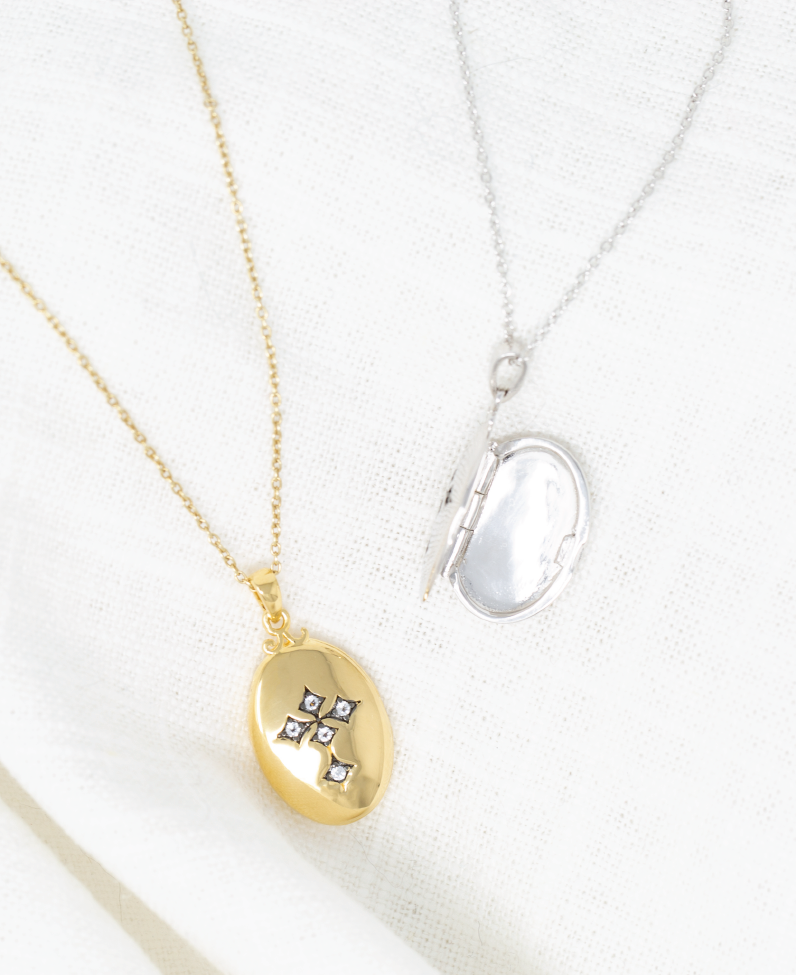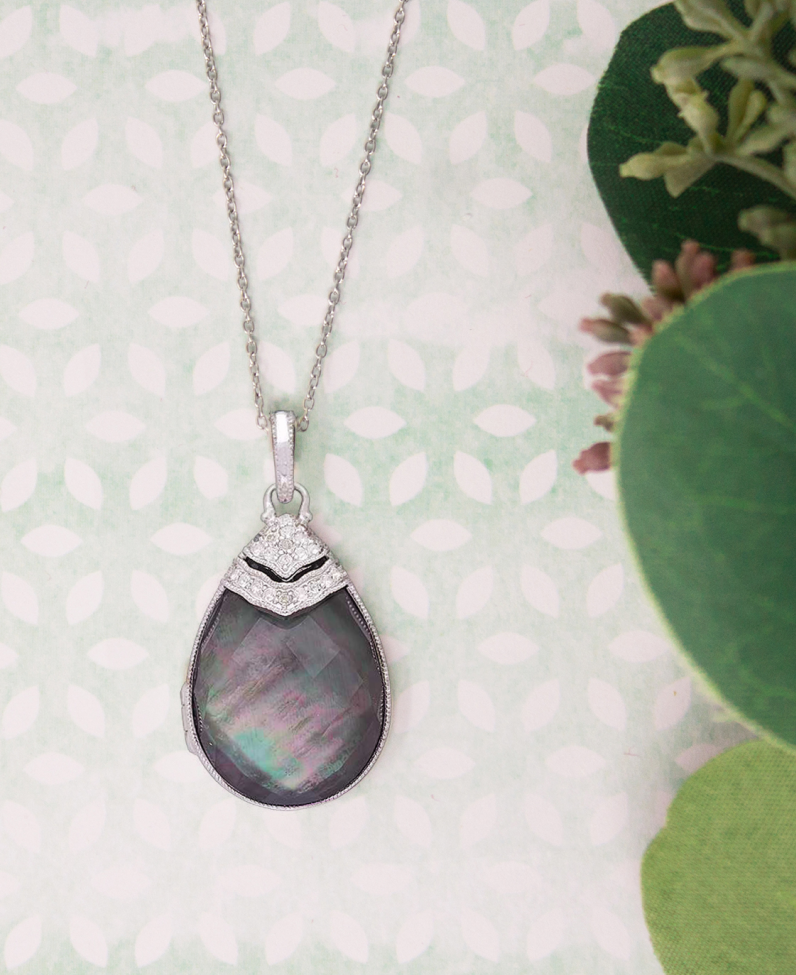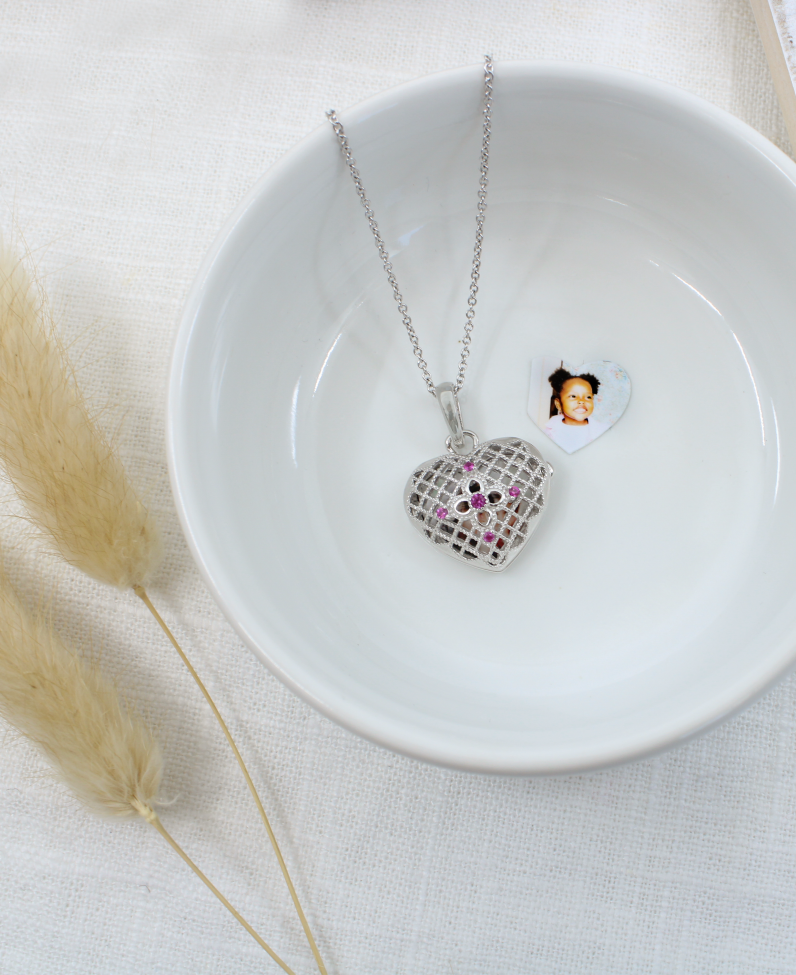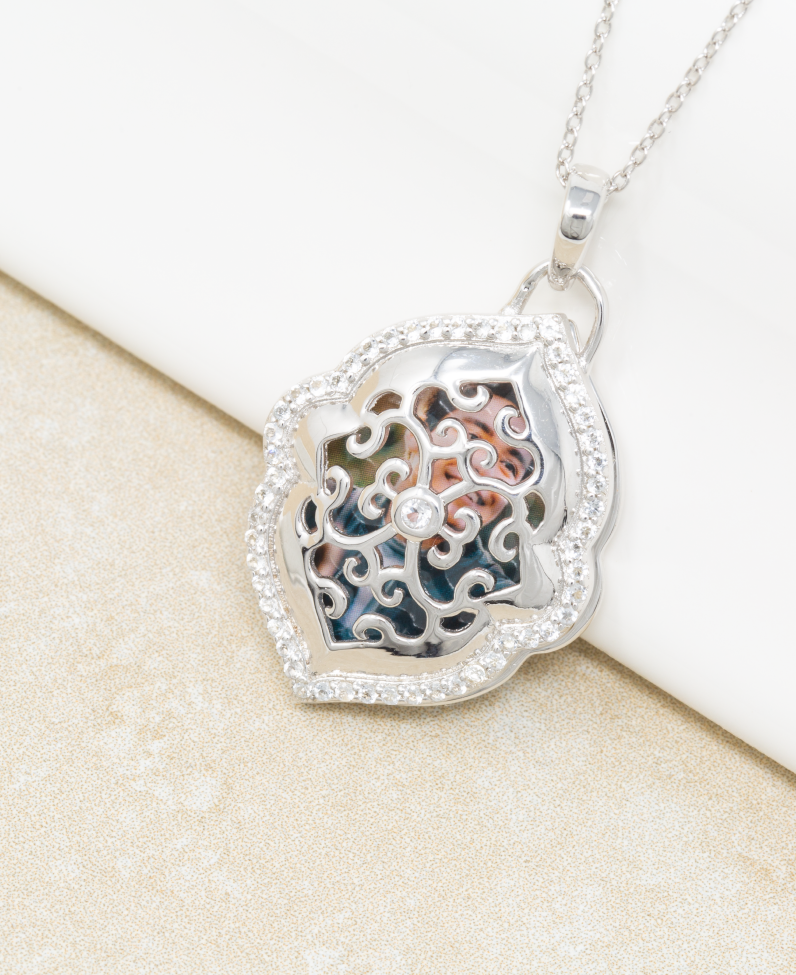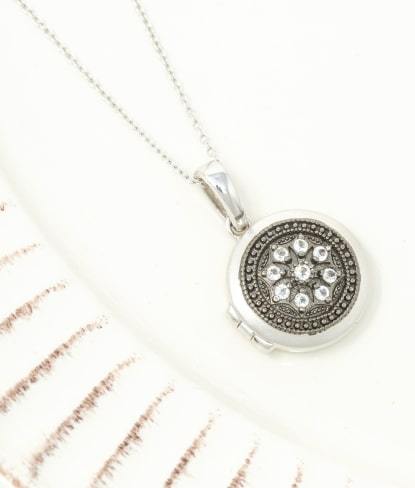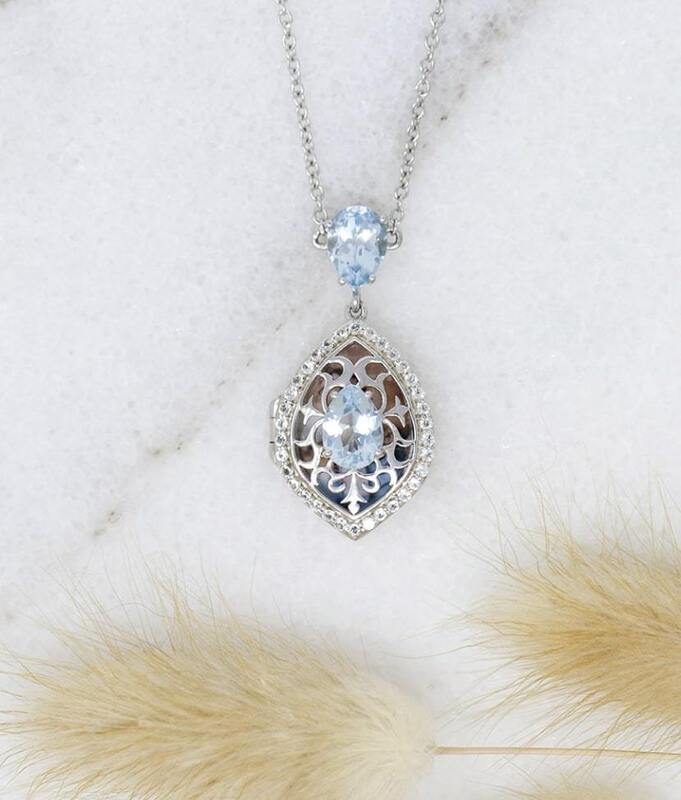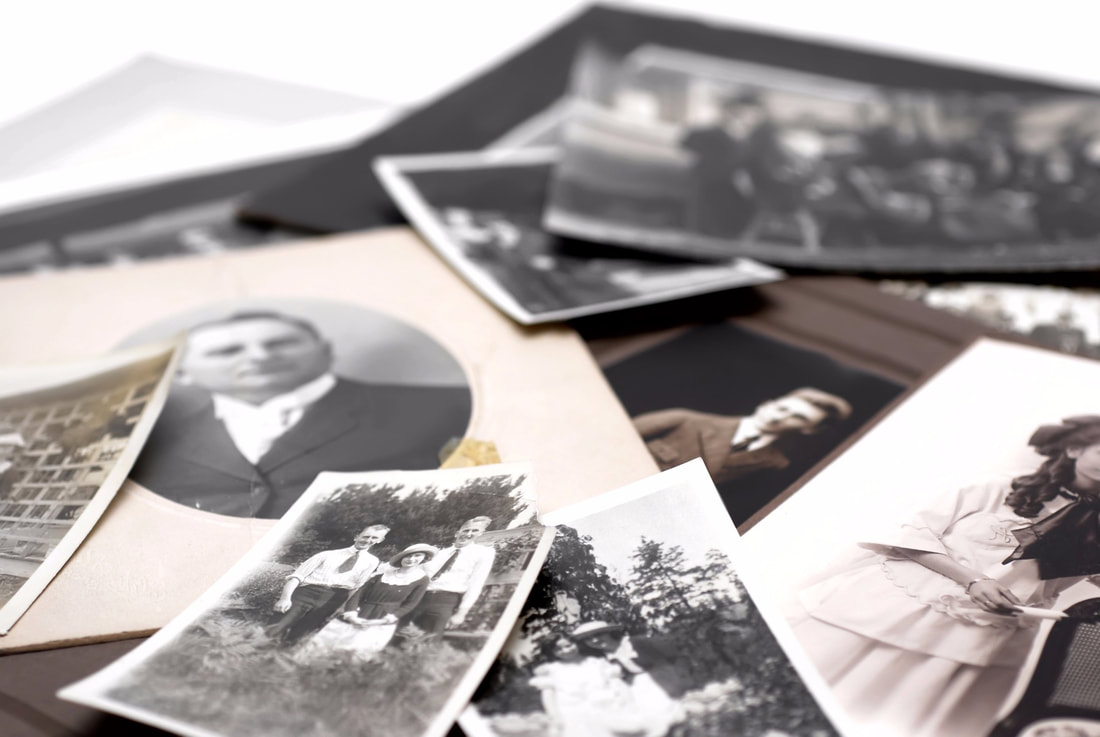The History Of Lockets
|
For centuries, the locket— a pendant that opens to contain a portrait, a lock of hair, or a tiny love letter—has been a classic accessory. Lockets may also be part of a bracelet, a ring, or more. Understanding the locket definition is key to understanding the overall importance of these collectibles. Over the course of history, lockets have been worn by men as much as they have by women. There have been many lockets designed for men. Although the word locket now brings to mind a more feminine pendant on a chain, the function of a locket can (and should) be considered in more general terms, as well. Lockets have evolved in many forms at different points in history. We now think of heart lockets. Or photo lockets. Or silver lockets. Or gold lockets. However, these collectibles have been worn as rings, pendants, buttons, banners, and more. Lockets and charms evolved to meet a particular, often somewhat utilitarian, need.
|
When they were worn by monarchs, they could be grand and bejeweled. When they were carried on the person of a World War I soldier in the trenches of Flanders Fields, they could be small and simple – not encumbered by jewels – but suffused with precious meaning. (The latter was the very definition of sweetheart jewelry). Sweetheart jewelry figured prominently into military history, especially during World Wars I and II. Lockets came into increasing prominence over the course of the 19th Century but date back far earlier. Lockets have represented the bonds of love and of marriage. Heart lockets represented love. They have celebrated union. In addition, lockets have been used in mourning. Some pieces were lockets to contain ashes. They preserved the memory of the dead, while keeping their physical remains close. The symbolism of the locket necklace is reflected in many arenas. Lockets are a seminal part of the plot in classic literature. Some of the most passionate couplings express tempestuous and tumultuous eternal love through the symbolism of the locket necklace. Featured, for example, in Bronte’s Wuthering Heights, at the death of Catherine, Heathcliff removes his rival-in-love Edgar’s hair from her locket necklace - replacing it with his own. A nod to Dying-Catherine’s impassioned declaration of love to Heathcliff: “He’s more myself than I am. Whatever our souls are made of, his and mine are the same.” In short, locket necklaces have represented aspiration and love; loss and longing. The history of the locket necklace represents nothing less than the all-encompassing experience of being human. it.
Lockets in the 18th and 19th Century
|
For centuries, the locket— a pendant that opens to contain a portrait, a lock of hair, or a tiny love letter—has been a classic accessory. Lockets may also be part of a bracelet, a ring, or more. Understanding the locket definition is key to understanding the overall importance of these collectibles. Over the course of history, lockets have been worn by men as much as they have by women. There have been many lockets designed for men. Although the word locket now brings to mind a more feminine pendant on a chain, the function of a locket can (and should) be considered in more general terms, as well. Lockets have evolved in many forms at different points in history. We now think of heart lockets. Or photo lockets. Or silver lockets. Or gold lockets. However, these collectibles have been worn as rings, pendants, buttons, banners, and more. Lockets and charms evolved to meet a particular, often somewhat utilitarian, need. When they were worn by monarchs, they could be grand and bejeweled.
|
When they were carried on the person of a World War I soldier in the trenches of Flanders Fields, they could be small and simple – not encumbered by jewels – but suffused with precious meaning. (The latter was the very definition of sweetheart jewelry). Sweetheart jewelry figured prominently into military history, especially during World Wars I and II. Lockets came into increasing prominence over the course of the 19th Century but date back far earlier. Lockets have represented the bonds of love and of marriage. Heart lockets represented love. They have celebrated union. In addition, lockets have been used in mourning. Some pieces were lockets to contain ashes. They preserved the memory of the dead, while keeping their physical remains close. The symbolism of the locket necklace is reflected in many arenas. Lockets are a seminal part of the plot in classic literature. Some of the most passionate couplings express tempestuous and tumultuous eternal love through the symbolism of the locket necklace. Featured, for example, in Bronte’s Wuthering Heights, at the death of Catherine, Heathcliff removes his rival-in-love Edgar’s hair from her locket necklace - replacing it with his own. A nod to Dying-Catherine’s impassioned declaration of love to Heathcliff: “He’s more myself than I am. Whatever our souls are made of, his and mine are the same.” In short, locket necklaces have represented aspiration and love; loss and longing. The history of the locket necklace represents nothing less than the all-encompassing experience of being human.
Lockets in the 20th Century
|
Widespread photography changed everything. Photo lockets became popular as inexpensive mass reproduction of images became possible. Documenting people, as well as moments in time became easier with each passing year. This marked a seismic shift in locket necklace history. Photography lent itself easily to the proliferation of the photo locket within the general population. Locket necklaces – with their many uses as a way to pay tribute to love and to loss - caught on. As photography emerged and became increasingly accessible so too did the acquisition of locket necklaces. Writes Susan Sontag: “That age when taking photographs required a cumbersome and expensive contraption – the toy of the clever, the wealthy, and the obsessed – seems remote indeed from the era of the sleek pocket cameras that invite anyone to take pictures. The first cameras, made in France and England in the early 1840’s, had only inventors and buffs to appreciate them.” In sum, photography made locket necklaces generally accessible to most people who wanted one. .
|
During World War I (The Great War), young soldiers in Europe were able to present their loved ones with a photo locket containing a portrait of themselves prior to their shipping out to various entrenched fronts. Some lockets were gold. Some lockets were silver. Some locket necklaces and charms were made from less precious materials, as well. In the United States, a surge in the demand for locket necklaces corresponds to the entry of the United States into World War I in 1917. These locket necklaces were so popular that they were sold at post offices so that they could be filled and easily shipped to any number of war fronts. back. This marked the emergence of wartime Sweetheart Jewelry. Sweetheart jewelry and collectibles were closely associated with military history of the 20th Century. Locket necklaces were worn by women left behind to hope for the safe return of their loved one(s). These lockets and charms were also carried and worn by men in battle as a reminder of home. Soldiers in battle carried lockets and charms with pictures of their wives, mothers, and children. These comforting images were contained in unisex locket pins, bracelets, buttons, and necklaces. The trend for Sweetheart Jewelry and collectibles continued into World War II (1939 – 1945). Similar to items worn in World War I, these mementos were exchanged to cement connection in uncertain and frightening times. Sweetheart Jewelry, such as locket necklaces and charms with photos, affirmed the connection of familial and romantic love. In life or in death. Sweetheart Jewelry was at once a way to celebrate the bonds of love and also to signal patriotism. This aspect of locket history is closely associated with military history. These lockets and charms clearly indicated country allegiance. These items therefore came to represent love of family, and love of country. In an important way, these keepsakes could knit family and country together at critical moments. For example, when a lonely soldier faced doubt or fear.
One is reminded of the immortal W.B. Yeats lines in his poem An Irish Airman Foresees His Death: I know that I shall meet my fate/ Somewhere among the clouds above/ Those I fight I do not hate/ Those I guard I do not love. At such a moment, one can imagine how a cherished photo locket worn on a person might have gone a long way to ground a deployed troop. Wartime Sweetheart Jewelry also expressed patriotism because items were made from materials other than metal. Metal was rationed. Those who made these locket keepsakes and collectibles did so with wood, Lucite, ivory, pearl, and more. Locket necklaces can recall history in a deeply personal manner. Consider the story of Tulio and Dario Lovvy. The Lovvy brothers were killed near the end of World War I and were considered to be heroes in battle. Their grieving parents made a photo locket of their boys. This locket necklace was given to their maternal aunt who was wearing it, when, during World War II she was sent to a detention camp in Italy prior to her deportation to a Nazi concentration camp in Poland or Germany. Before a final order of deportation, this woman, like others, was stripped of her valuables. Among her valuables was the photo locket necklace she wore to remember her fallen nephews. Somehow bags of belongings seized in this way found their way to the Italian treasury where they sat for decades. It was only the 1990’s that the items were discovered. Among the items was the photo locket necklace. This clearly identifiable locket necklace tells a story of young men, who died for duty to country, and in defense of family. The irony of the death of their aunt only two decades later needs no further elaboration. That their story is revealed in this manner is a testament to the singular power of the locket necklace as a teller of stories and a keeper of secrets, both. Although these lockets and charms were very popular both in Europe and in the United States during World Wars I and II, they fell out of fashion thereafter as an expression of wartime hope and mourning. There is little documentation of lockets as keepsakes in this way in the Korean Conflict and Vietnam War eras. They faded a bit for a time. And now, locket necklaces have come roaring
One is reminded of the immortal W.B. Yeats lines in his poem An Irish Airman Foresees His Death: I know that I shall meet my fate/ Somewhere among the clouds above/ Those I fight I do not hate/ Those I guard I do not love. At such a moment, one can imagine how a cherished photo locket worn on a person might have gone a long way to ground a deployed troop. Wartime Sweetheart Jewelry also expressed patriotism because items were made from materials other than metal. Metal was rationed. Those who made these locket keepsakes and collectibles did so with wood, Lucite, ivory, pearl, and more. Locket necklaces can recall history in a deeply personal manner. Consider the story of Tulio and Dario Lovvy. The Lovvy brothers were killed near the end of World War I and were considered to be heroes in battle. Their grieving parents made a photo locket of their boys. This locket necklace was given to their maternal aunt who was wearing it, when, during World War II she was sent to a detention camp in Italy prior to her deportation to a Nazi concentration camp in Poland or Germany. Before a final order of deportation, this woman, like others, was stripped of her valuables. Among her valuables was the photo locket necklace she wore to remember her fallen nephews. Somehow bags of belongings seized in this way found their way to the Italian treasury where they sat for decades. It was only the 1990’s that the items were discovered. Among the items was the photo locket necklace. This clearly identifiable locket necklace tells a story of young men, who died for duty to country, and in defense of family. The irony of the death of their aunt only two decades later needs no further elaboration. That their story is revealed in this manner is a testament to the singular power of the locket necklace as a teller of stories and a keeper of secrets, both. Although these lockets and charms were very popular both in Europe and in the United States during World Wars I and II, they fell out of fashion thereafter as an expression of wartime hope and mourning. There is little documentation of lockets as keepsakes in this way in the Korean Conflict and Vietnam War eras. They faded a bit for a time. And now, locket necklaces have come roaring
Lockets In Modern Times
|
The dawn of the 21st Century has delivered a resurgence in lockets. An article which appeared in the Wall Street Journal, speculates that photo lockets and charms are back in fashion because they lend themselves to coy mystery in an age of unprecedented transparency. We all live online and share every picture imaginable. Still, it would seem that that people like to keep secrets. “It’s hard to remain private in this era of social media and overreaching data collection, but in the world of jewelry, at least – the habit of keeping secrets close to your heart is fashionable again.” In addition, the emergence of digital photography has changed the way we document. How we select a photo to encase in jewelry requires consideration. (The kind that might occur when a family gathers at a recently deceased matriarch’s home to go through shoe boxes of old photos). This communal activity invites shared introspection. The purposeful search for the photo to include in a locket necklace gives us opportunity to pause and reflect about what we choose to preserve. A resurgent appreciation of the locket necklace is one way to meet the challenge thrown down by the writer Susan Sontag. Sontag encourages a photographer to see the “correctness and suitability of a subject.” Lockets necklaces are gifted now to honor birth. They are given to mark occasions such as graduations, and marriage. They are perhaps the most meaningful gift to commemorate a birthday or Mother’s Day. Photo locket necklaces remain a way to remember and honor the dead.
|
As a rule, lockets lend themselves appropriately to bereavement. They may contain a photo. But so too are there lockets for ashes in the form of necklaces, rings, or other keepsakes. Prominent wearing of lockets for ashes is increasingly common - especially as people become more comfortable in speaking openly about mortality. It is now common (if not standard) practice for funeral homes to offer the bereaved keepsake jewelry containing a photo. Or a locket made specifically to contain ashes. People coping with loss often express a wish to literally carry their loved one with them. The bereaved often express an almost primal need not to “scatter” the ashes of a loved one, but rather to keep that person close. In this way, lockets for ashes serve as miniature urns. Or, these lockets contain photos or other mementos. Broadly speaking, these lockets and charms accommodate the wish for continued connection more so than other jewelry. The gift of a locket necklace or charm is immense as a ritual in and of itself. This is especially true in the context of the fast-paced lives we lead. Further, in a digital age, reproduction has become almost too easy. Of late, the locket necklace has come into the modern age with digital options. Filling a locket necklace or keepsake offers a unique opportunity for reflection. It invites introspection wherein someone chooses to honor another person. It presents a moment to consider what moments, big and small, mean. To cherish what they represent. And to gift that memory.
With You Lockets
|
With You was founded as a tribute to a daughter’s love for her father. Founder Mikki Glass lost her father to brain cancer when she (and he) were far too young. When Mikki’s sister decided to marry, it occurred to Mikki that she wanted to find a way for her sister to include their beloved father in her wedding ceremony. Recalling the death of her father and the genesis of Mikki writes: “My heartbreak would only increase as life’s milestones popped up. Those moments he wouldn’t be a part of were the ones that hurt the most. Three years after he died, my sister was engaged to be married and I wanted our father to be a part of the wedding, not just a memory. I created an anklet with a locket and tucked his photos inside so he could walk her down the aisle … I wore that anklet at my own wedding day and soon began making them for other friends and family. My heartbreak abated with each locket I created for others. But the idea of carrying him with me in some way remained.” And with that, Mikki decided to formally launch With You.
|
She wanted to remember the democracy of the locket necklace by creating merchandise that was well-made and beautiful – but also possible to afford. In a nod to locket necklace history, she set out to offer lockets for men as well as lockets for women. With You merchandise includes locket necklaces, locket bracelets, locket rings, and locket cufflinks, among other keepsake collectible items. Working with her husband Troy Haley, himself an Army veteran, the two have built a brand. Together they set out to honor the stories of regular people using the locket necklace as their medium for expression. This is reflected in the stories their clients share. It is further reflected in the tributes contained in the names of each locket. With You recognizes that heirloom locket jewelry should not break the bank and seeks to provide a customized keepsake to mark any occasion. With You products are made to stand the test of time. The company takes pride and pleasure in each piece and in ensuring that clients are pleased with the result. The goal is simple: to create locket necklaces to be passed through generations - while remaining affordable. (As we dusted off the history of the locket necklace and keepsake, we discovered that it is nothing if not democratic). This is the legacy of the sometimes fancy (but often humble) locket necklace. With You Founders want the stories of family to tumble down through the generations. They want a little girl to pause at the top of the stairs, recognizing an old photo because she has seen it in her mother’s locket necklace. They want her to understand that someday that locket keepsake will belong to her. They are about generational interconnectedness – and love and family. With You lockets are made to mark all occasions – births, graduations, marriages. Lockets and charms are heirlooms. Each piece tells a very particular and extremely personal story. The most compelling part of locket necklace wearing relates to the deeper meaning each piece contains. Mikki and Troy believe that in honoring a loved one in creating a custom photo locket, a family history is preserved. What photograph, frozen in time, will someday land in a locket necklace or charm? Which descendant will uncover it, unfasten it and put it on? We all have unidentified pictures of people framed and buried deep within chests of drawers. When they are inevitably discovered they have a story to tell. A mystery, sometimes. But here they are – contained in a locket necklace charm – evidence of their existence.





